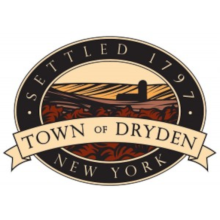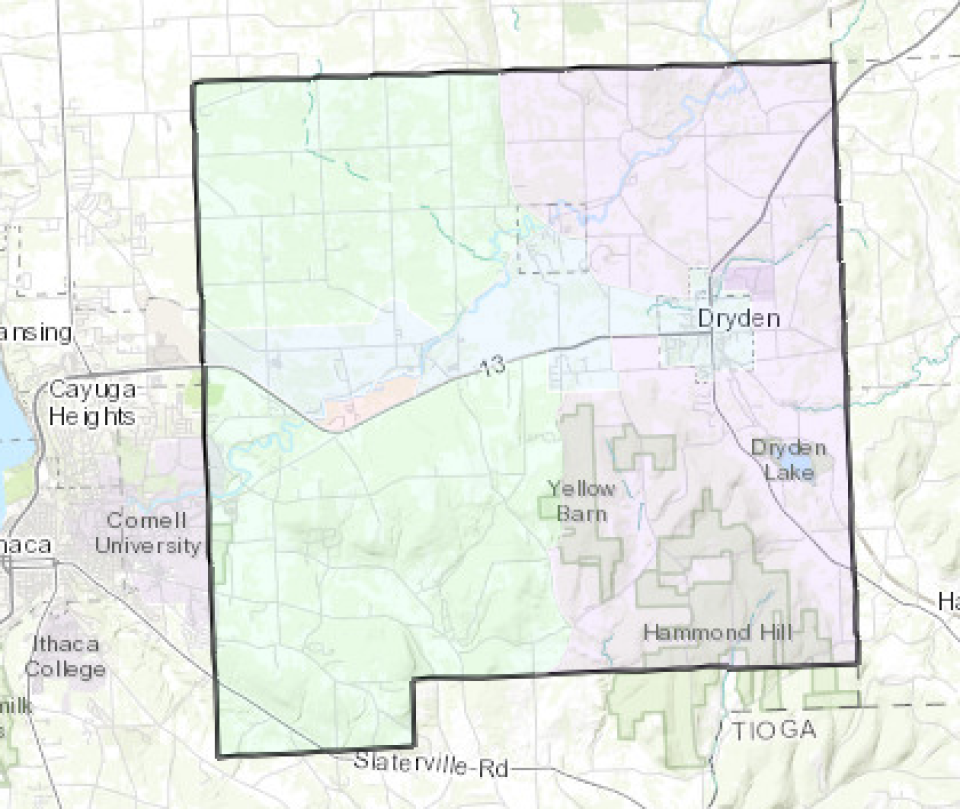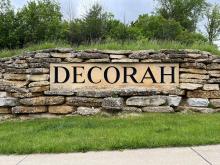
Dryden, New York, population 14,500, has formally launched the town’s municipal broadband network, becoming the first municipality in the state to provide residents with direct access to affordable, publicly owned fiber.
According to the Dryden Fiber website, the town now offers local access to fiber broadband at three speed tiers: symmetrical 400 Megabits per second (Mbps) for $45 a month, symmetrical 700 Mbps for $75 a month, and symmetrical gigabit broadband service for $90 a month.
The city’s pricing options are a dramatic improvement from the area’s regional cable monopoly Charter Communications, whose Spectrum-branded service has largely monopolized vast swath of upstate New York, leaving consumers saddled with high prices, spotty coverage, slow speeds, and some of the worst customer service of any company in America.
It’s also a dramatic improvement over the sluggish, expensive, dated Frontier DSL that peppers the green rolling hills of Tompkins County. After filing for bankruptcy for failing to upgrade its network to fiber, Frontier has promised improvements–but none of those improvements have found their way to rural upstate New York.
The full cost of Dryden’s municipal network is expected to be $15 million. The pilot area of the project—covering around 50 residences in the southwest part of the town—will be funded by a combination of $2 million in federal COVID-19 disaster relief funding, an Appalachian Regional Commission grant and an as-yet-unspecified number of bonds.
“We were motivated to study and build a municipal broadband system because residents were not satisfied with the options and service provided by commercial ISPs,” Dryden Town Supervisor Jason Leifer told ILSR.
“In 2019 we commissioned a study and found that we could offer the service with newer technology and better pricing over the long term,” Leifer said. “90% of respondents to our household survey supported the project. Dryden was ahead of the curve on the broadband issue because we knew prior to COVID that access to reliable and affordable high-speed internet service is a necessity for our residents.”
Like countless U.S. communities, the pandemic highlighted the essential need for uniform, affordable access, something both Spectrum and Frontier consistency refused to provide, Leifer said.

“The genesis of Dryden Fiber was directly rooted in our unsuccessful negotiations in 2018 with Charter Spectrum for more buildout in Dryden,” Leifer said. “Even in 2018 we knew that there were areas of the town that were not served by any provider despite the commercial providers and FCC maps showing that service in these areas.”
Once Dryden completes the initial pilot project, city leaders say they’ll shift their focus to connecting the backbone of the network in the southeast of the city. Phase two will focus on shoring up access to residents in the western half of the city, while phase three will focus on connecting locals in the eastern half of the municipality.
The cadence and full scope of the project will depend heavily on the city’s ability to secure additional funding.
City leaders say they’ve already applied for a $2.3 million federal Reconnect grant, a Tompkins County Recovery Fund grant, and hope to be a major participant in the looming Broadband Equity, Access, and Deployment (BEAD) funding, the latter only made possible by the Infrastructure Investment and Jobs Act.
A Political Showcase For Community Broadband Investment
Dryden’s quest to secure funding received a significant boost courtesy of a visit by New York Senator Chuck Schumer. Schumer attended a press event in Dryden to highlight the state’s ongoing ConnectALL Initiative, which aims to “deliver affordable broadband to millions of New Yorkers and transform the state's digital infrastructure through new investments.”
The state’s billion-dollar broadband initiative has been deemed the state’s largest broadband investment in history. It established three different broadband grants programs, shored up state broadband mapping, created a new state broadband coordination office, established several digital equity programs, and expanded access to the American Connectivity Program (ACP).
In 2021 New York State also passed a new law (pdf) demanding that regional broadband providers provide low-income consumers $15, 25 Mbps broadband. The goal: to try and help struggling Americans afford the high cost of broadband during the pandemic. Under the proposal, ISPs are also allowed to offer $20, 200 Mbps tiers, with any price increases capped at two percent per year. Charter and other providers quickly sued to end the program.

In Dryden, Schumer drew obvious parallels between the country’s rural electrification efforts and the quest to expand access to affordable fiber.
“Franklin Roosevelt said that we have to have every home have electricity, because it was a necessity by the 1930s,” Schumer said. “We say that the same occurs in the 21st century with broadband internet. It’s a necessity for your kids learning in school, it’s a necessity for healthcare, it’s a necessity for small businesses and jobs.”
Schumer also urged locals to kick the tires of the FCC’s new (and once again not particularly reliable) broadband maps, filing challenges to data that isn’t accurate to ensure New York cities and towns get their fair share of looming federal BEAD funding.
“We’re asking families across Tompkins County, across the Southern Tier, across all of upstate New York, to check the map,” Schumer said. “In the old days, the companies liked to exaggerate how many people got broadband, so they put more people on the map than actually got it. Now, the maps that are being sent by New York State to the FCC, we want to make sure they’re accurate.”
While the FCC’s new broadband map is an improvement over older versions, New York state officials say they’ve already found 31,000 unserved New York State addresses the maps falsely claim have access to affordable broadband. If the FCC’s maps aren’t fixed, billions of dollars could be wasted on projects that don’t actually fix the underlying problem.
Dryden finds itself at the vanguard of a massive, organic response to prolonged telecom market failure and federal policy dysfunction. With federal leadership often lacking, states and local municipalities continue to take a leadership role in building something better while paying close attention to the lessons of history.
“We felt that the only way to solve the problem was to treat the issue the way rural electrification was treated under Franklin Delano Roosevelt's administration 90-years ago,” Leifer told ILSR. “Our solution is to build a municipal broadband system to accomplish the goal of universal service.”







